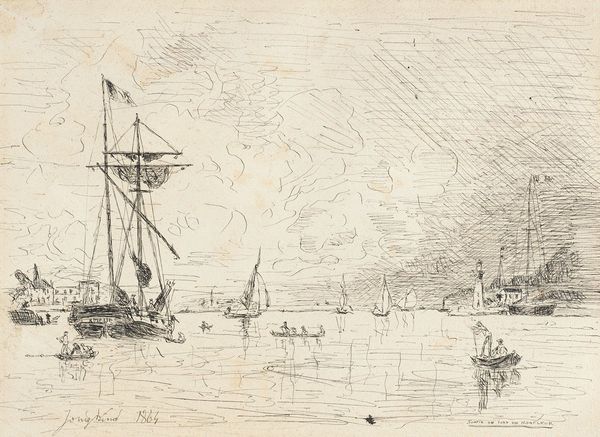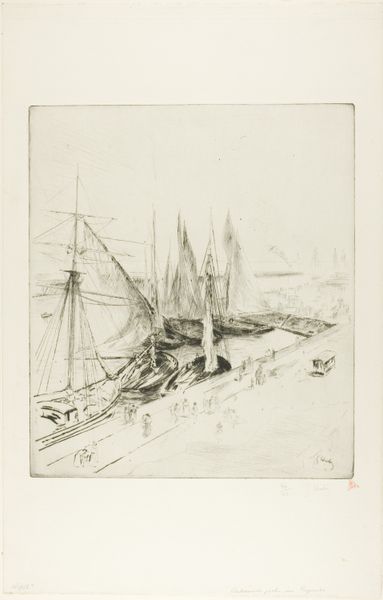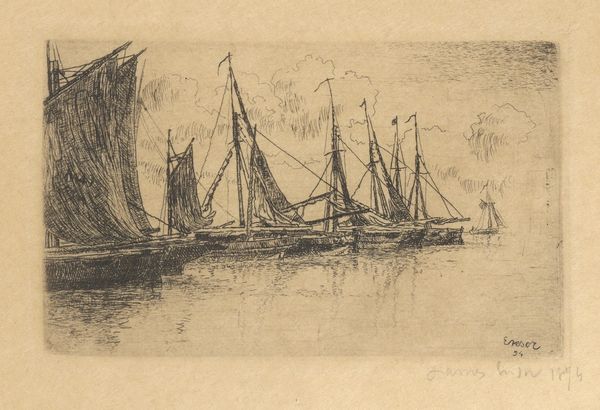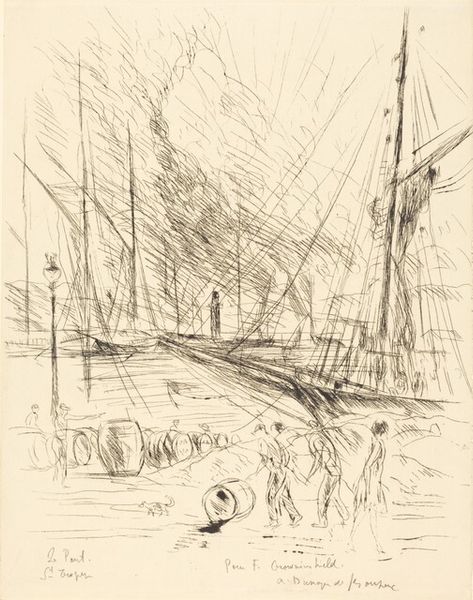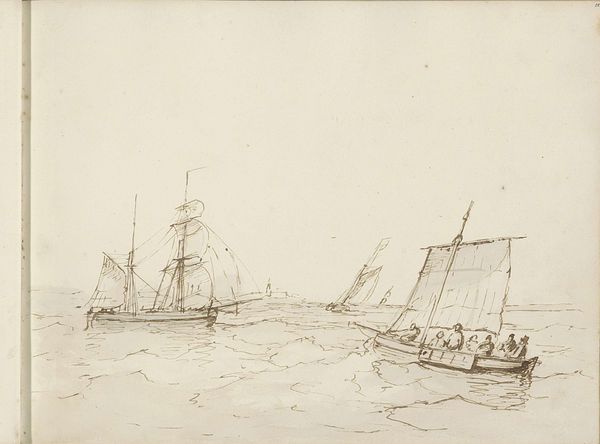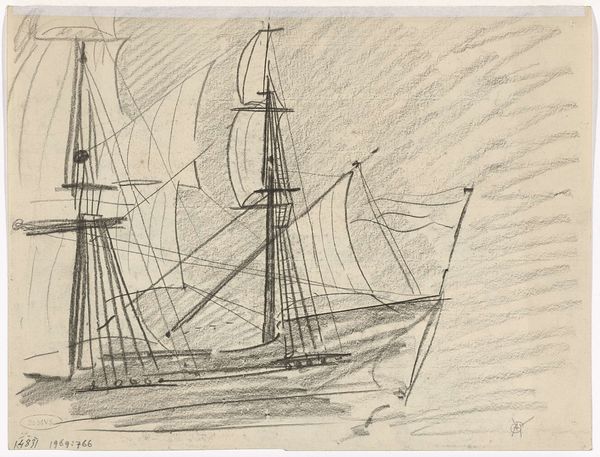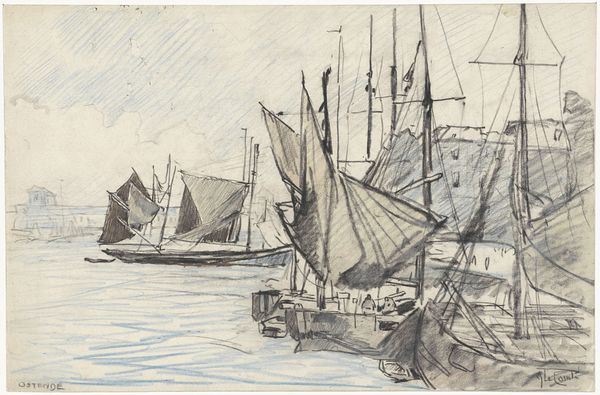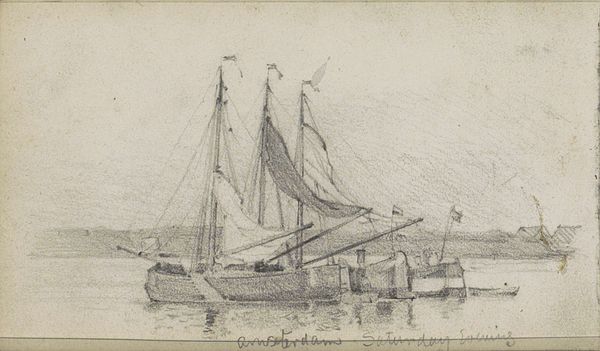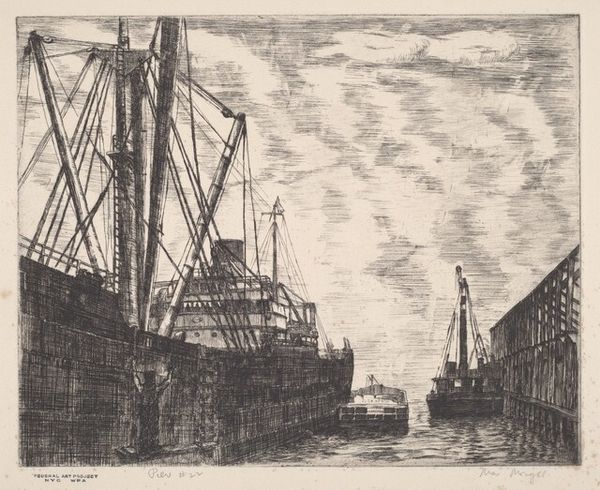
Three-Master, Saint-Tropez (Saint-Tropez, le trois-mats) 1927
0:00
0:00
print, etching
# print
#
etching
#
landscape
Copyright: National Gallery of Art: CC0 1.0
Editor: This is André Dunoyer de Segonzac’s etching, "Three-Master, Saint-Tropez" from 1927. The lines feel so active, like they’re capturing a specific, blustery moment at the harbor. What do you see in this piece? Curator: Beyond a picturesque harbor scene, I see a commentary on labor and leisure during the interwar period. Etchings like this made art accessible, connecting working-class viewers with scenes of bourgeois leisure, like yachting in the French Riviera. Consider how the active lines evoke not just wind, but also the relentless, often invisible labor required to maintain this lifestyle. What social strata do you think is not represented in the scene? Editor: That’s a great point! You don't see any of the dockworkers or the people who would have kept the port running. It's a very sanitized version of Saint-Tropez. Curator: Exactly. Segonzac presents us with the polished facade of privilege. Look at the lighthouse, a beacon traditionally symbolizing safety and guidance; but here, does it also subtly signal a controlled, exclusive space? How might we interpret the absence of working bodies in relation to the presence of these grand, almost theatrical ships? Editor: I never considered that! So the image is not just about the beauty of sailboats, but also about what is intentionally left out of the frame. Thank you! Curator: It is crucial to critically analyze what is included and what's strategically omitted, as it highlights social disparities within that period. I hope the conversation has equipped you with analytical tools, because we must critically asses the implications of what they present to the audience.
Comments
No comments
Be the first to comment and join the conversation on the ultimate creative platform.
